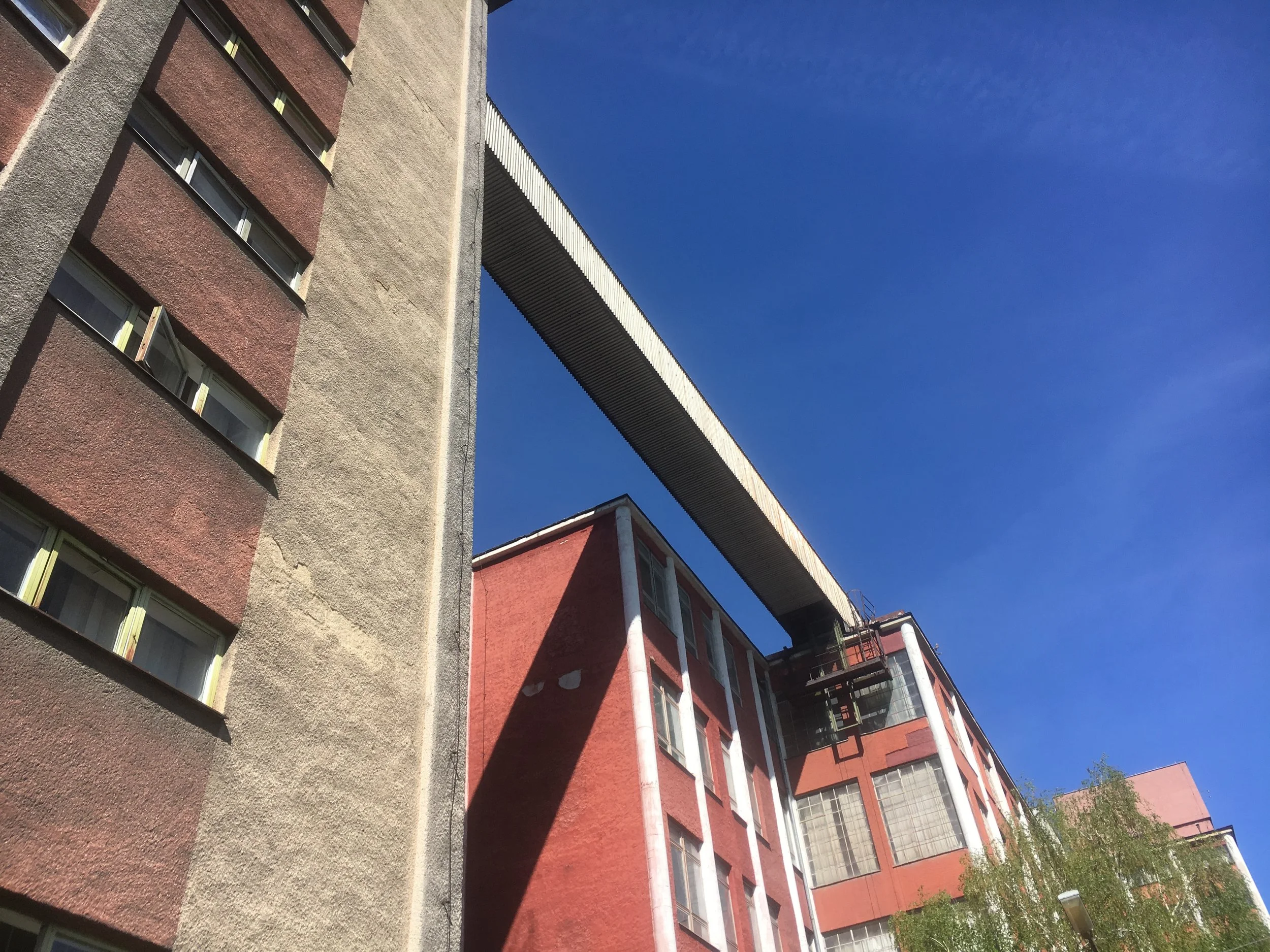The Welly. Rebooted.
Client: Bòtann
Studio McCaffrey was tasked with creating a new footwear brand to restart the wellington boot industry in Scotland. The project was based in Dumfries, the historical home of Scottish rubber boot manufacturing, which was once known for producing the best wellington boots in the world.
-

The aim was to revive the industry, and extensive interviews and research uncovered a rich heritage of innovation and craftsmanship in local rubber manufacturing. This inspired and informed a contemporary vision for a new Scottish wellington brand, centred on a progressive, high-quality, city-ready rubber boot.
-

The concept involved creating a new type of waterproof boot that represented Scotland’s unique countryside while paying homage to its cities and progressive design culture.
“MODERN UTILITY” was the guiding phrase throughout the design process, leading to the development of a new type of wellington for urban environments—something strong and water-resistant enough for a wet morning commute through the park, yet smart enough to be worn during a meeting.
-

Initial sketches took shape quickly, specifying a new sole silhouette for a wellington which traditionally featured a heel. A wedge-style rubber sole unit provided a modern look and a larger underfoot grip area.
-

Explorations began on the idea of a waterproof shoe section and a separate, potentially interchangeable waterproof fabric section for the ankle and above. This design offered versatility for the wearer and efficiency for the brand to create different combinations in a collection based on a single moulded element.
-
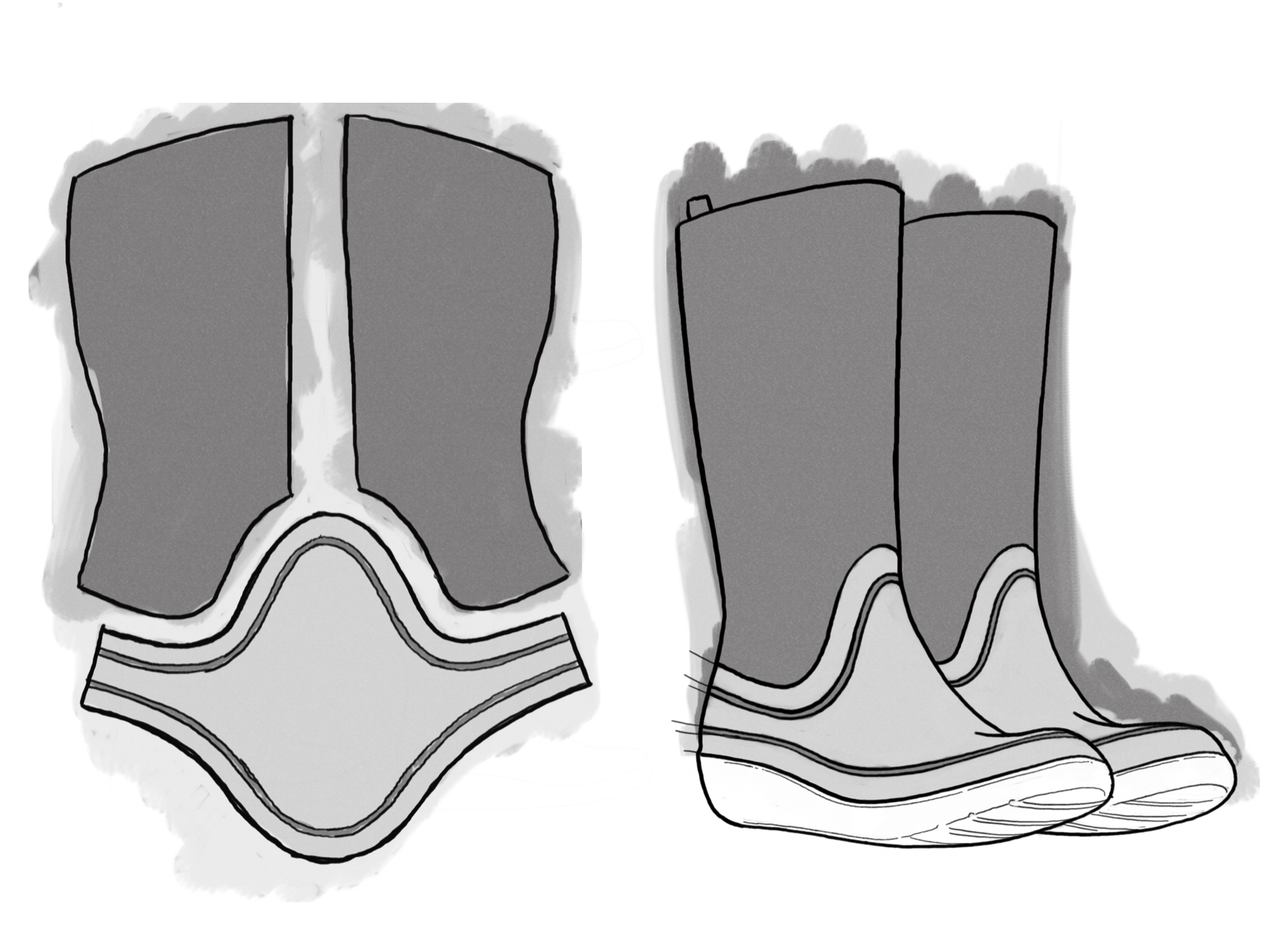
The boots featured a rubber base and sole, with a full-length neoprene sock for the ankle and calf, providing warmth and a snug fit while creating a stretchy collar for ease of access, allowing the wearer to slip in and out effortlessly.
-
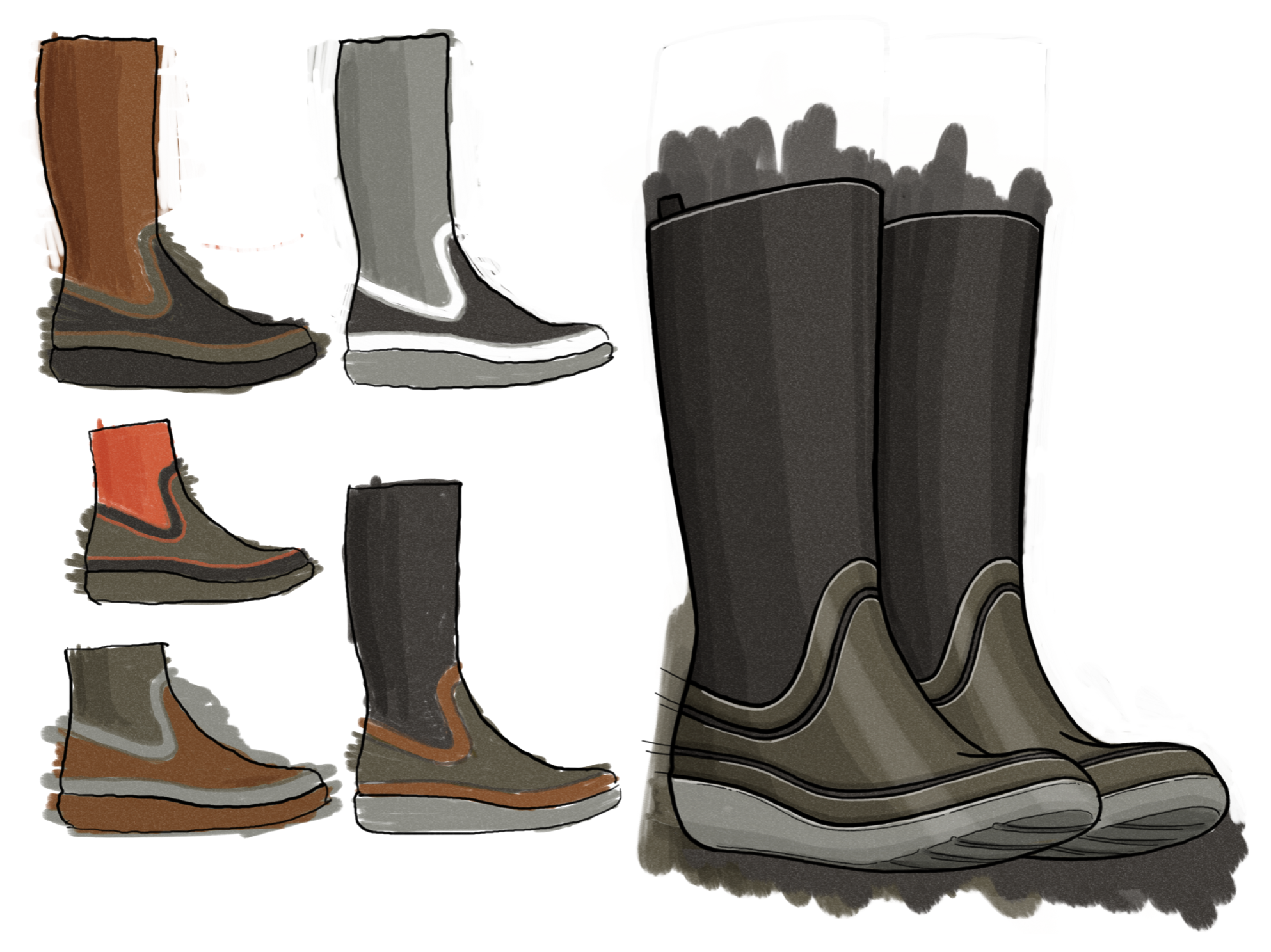
By maintaining the same shoe section and swapping these interchangeable neoprene socks, various silhouettes could be created, ranging from a low version suited for everyday city commutes to full-height protective boots for more challenging outdoor activities.
-
While the boot concept was developing, the search began for a factory capable of producing it. An exceptional rubber factory in Bratislava called Novesta was identified. Founded in the 1930s, it was the largest shoe factory in the former Czechoslovakia, producing rubber-soled shoes for various industries, including exercise, work, sports and technical rain boots for the military.
-

Novesta exclusively uses 100% natural rubber as a raw material, and any off-cuts and scraps can be re-kneaded into new rubber.
-
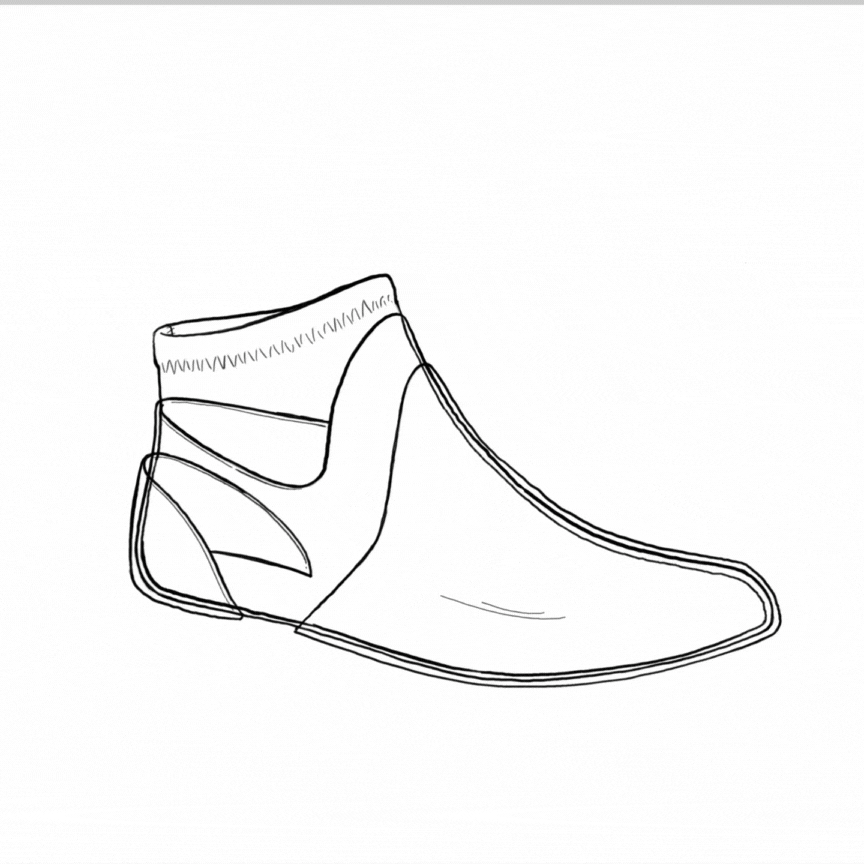
The calendered, sheet rubber would be layered strategically around the foot using the thinner, supple inner shell in areas requiring elasticity, particularly near the neoprene collar. Rubber sheets reinforced high-stress areas, including the heel and forefoot vamp. A textured rubber sidewall was added for extra strength and protection, along with components designed to facilitate easy pulling on and off. A shaved, expanded rubber sole was used to launch the definitive prototype for fitting and testing.
-

The initial prototype closely aligned with the vision. The elasticated trunk provided adaptable support and comfort around the ankle area, addressing a common pain point in traditional wellington boots while allowing active articulation of the ankle—ideal for quick dashes on wet pavements.
-

User feedback was gathered from a sample of the target audience, comprising young women who enjoyed city and countryside settings.
-

They unanimously favoured the ‘chukka’ height ankle boot version, which was easy to slip on and complemented their all-day personal style.
-

After additional testing, final construction details were refined to produce definitive tech packs, ready to be sent to the factory for sample production. Instructions for labelling, packaging details and artwork for a care leaflet were prepared for the first sales orders.
To launch the collection, a new brand and company—Bòtann—was created, translating to ‘rubber boot’ in Scots Gaelic. The new boot became the core element in a campaign to revitalise the rubber welly industry in Scotland, centred around this collection and made available to the public through selected e-commerce retailers and public events.
-

The debut collection featured the signature style: chukka-style ankle boots offered in essential, limited colourways such as All-Black, Khaki and Forest Berry.
-
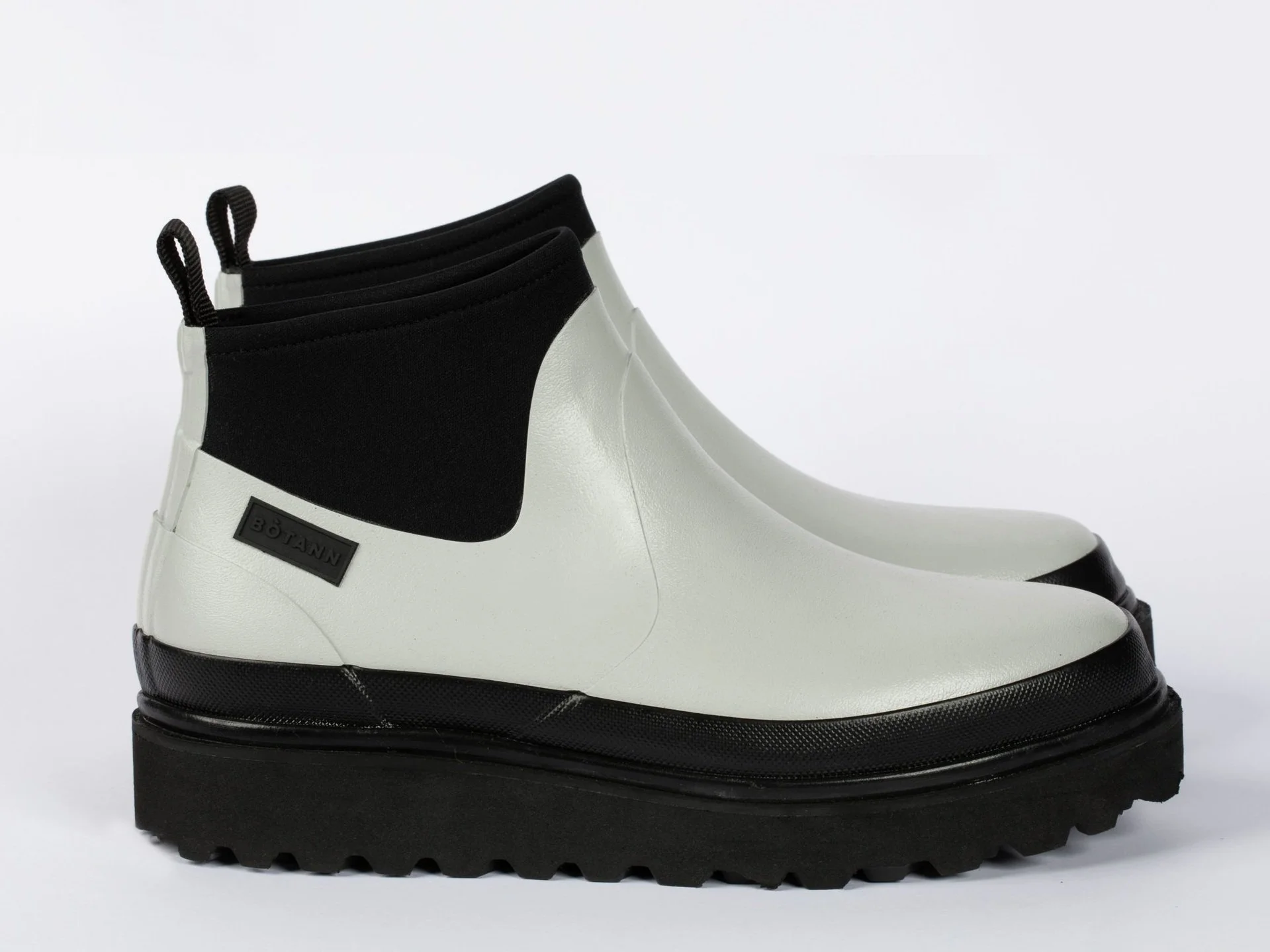
The most popular colourway was Putty White with black trim and detailing.
-

A limited-edition version was designed in collaboration with local illustrator Alice Dansey-Wright to complement the collection.
-

Bòtann launched via a successful crowdfunding campaign, quickly gaining favour with young, active, city-smart women who enjoy exploring nature.
For full story see video below.
(Part of a guest lecture given at Glasgow School of Art, January 2025)
-
“Robert's passion for design stretches far beyond his work. He lives and breathes it, bringing a contagious energy and assurance to the teams he collaborates with."
Michael Nicolson, Director - Bòtann
